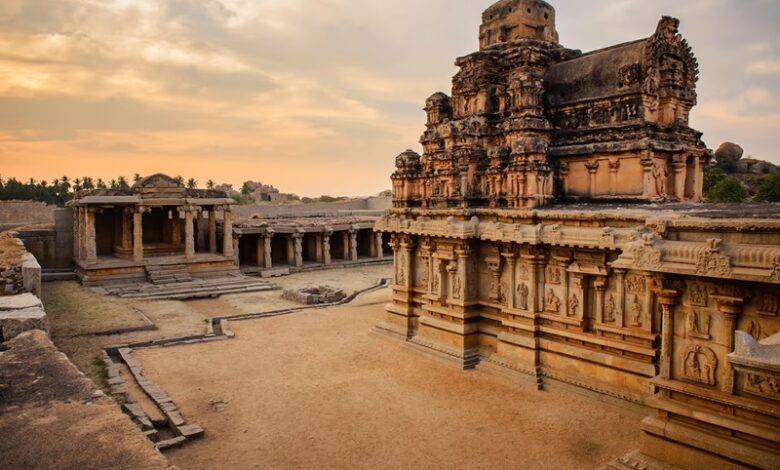The Hidden Blueprint: The Astonishing Geospatial Alignment of Eight Shiva Temples Centuries Before Satellite Technology
News Mania Desk / Piyal Chatterjee / 1st May 2025

In the age of hyper-precision mapping, where even the slightest miscalculation can be corrected with a few lines of code or a GPS ping, the marvels of ancient Indian architecture continue to defy modern understanding. Among the most awe-inspiring of these enigmas is the nearly linear, geospatial alignment of eight Shiva temples — each located hundreds of kilometers apart, constructed centuries and even millennia ago — that lie astonishingly along the 79° east meridian.
Long before satellite imagery, global positioning systems, or cartographic surveys, these sacred spaces were designed and erected with an accuracy that seems implausible by today’s technological standards. This phenomenon, often referred to by scholars and spiritualists alike as the Shiva Shakti Aksh Rekha, is more than a cartographic curiosity — it may well be a profound testament to the lost sciences and metaphysical understanding embedded within India’s temple-building traditions.
This sacred line of longitude, extending roughly from the high-altitude shrine of Kedarnath in Uttarakhand to the coastal sanctum of Rameswaram in Tamil Nadu, appears to link eight ancient Shiva temples like beads on a celestial thread:
Kedarnath Temple, Uttarakhand – Located at an elevation of over 11,000 feet in the Himalayas, this Jyotirlinga temple is believed to have been established by the Pandavas and later reconstructed by Adi Shankaracharya in the 8th century CE. Its location is remote and perilous — and yet it aligns almost perfectly with temples far to the south.
Kaleshwaram Temple, Telangana – An ancient site of pilgrimage on the banks of the Godavari River, this temple is famed for its unique pair of Shiva Lingas on a single pedestal, symbolizing the dual aspects of divinity.
Srikalahasti Temple, Andhra Pradesh – This temple is associated with the element of Air and is believed to have been worshipped by Vayu, the wind god himself. It holds deep astrological significance, especially in rituals related to Rahu and Ketu.
Ekambareswarar Temple, Kanchipuram – Representing the Earth (Prithvi) among the Pancha Bhoota Stalams, this colossal temple complex spans over 25 acres and boasts one of the tallest temple towers in South India.
Annamalaiyar Temple, Tiruvannamalai – Nestled at the base of the sacred Arunachala Hill, this temple is a manifestation of Fire (Agni) and is the center of the globally revered Karthigai Deepam festival, where a flame is lit atop the mountain to symbolize Shiva’s cosmic light.
Jambukeswarar Temple, Thiruvanaikaval – Embodying Water (Apas), the temple is famous for the underground spring that keeps the sanctum constantly wet — an architectural feature both symbolic and miraculous.
Nataraja Temple, Chidambaram – Revered for its unique representation of Shiva as the Lord of Cosmic Dance (Nataraja), this temple is a marvel of symbolic architecture. It represents Ether (Akasha), the most subtle of the five elements, and its sanctum enshrines “empty space,” inviting contemplation on the formless aspect of divinity.
Ramanathaswamy Temple, Rameswaram – A southern pilgrimage terminus for Hindus, this temple links the Ramayana to Shaiva worship. Its corridors are among the longest in the world and its sanctity is shared between Shiva and Vishnu traditions.
The geographical precision of this alignment is not only intriguing but deeply perplexing. How did temple architects from disparate regions and time periods — some separated by over a thousand years — achieve such uniformity in orientation and placement? Without advanced instrumentation, the very notion that such a feat could have been accomplished borders on the implausible — unless one acknowledges the possibility that ancient Indian knowledge systems possessed astronomical, mathematical, and geomantic insights now lost or obscured by time.
In Vastu Shastra — India’s ancient doctrine of architecture — orientation, energy flows, and cosmic harmonization play central roles. Temples were not randomly built; they were designed as cosmic engines, harmonizing the terrestrial with the celestial. The 79° east meridian may have been regarded as a sacred axis, channeling spiritual energy along its path, with each temple acting as a nodal point of reception and transmission. In tantric cosmology, such meridians are not merely geographical — they are energetic pathways, akin to nadis in the yogic body.
Moreover, the alignment of these temples may mirror an underlying spiritual cartography — a kind of terrestrial mandala inscribed upon the Indian subcontinent, suggesting that the land itself was perceived as a body, a sacred geography to be awakened through the placement of temples and pilgrimage routes.
In the modern imagination, such alignments are often dismissed as coincidental or over-interpreted. But to do so would be to underestimate the complexity and sophistication of ancient Indian thought. Whether one interprets this alignment as a scientific anomaly, a metaphysical design, or a divine revelation, it undeniably challenges the boundaries of conventional historical narratives.
What remains today are these eight majestic shrines — some bustling with daily rituals, others nestled in solitude — quietly echoing an ancient blueprint that perhaps was never lost, only waiting to be rediscovered. In their silent stone geometry lies a profound reminder: that knowledge, once deeply rooted in spirit, science, and space, can endure far beyond the instruments that once measured it.






